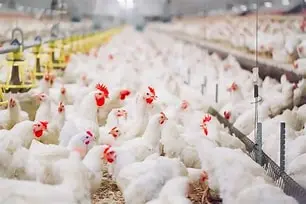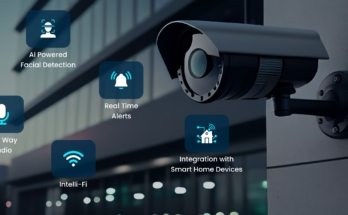Smart Poultry Farming: Monitoring Environmental Conditions with IoT
In recent years, technology has revolutionized agriculture, and the poultry farming industry is no exception. Smart poultry farming, particularly through the integration of the Internet of Things (IoT), has made it easier to monitor and optimize environmental conditions in poultry houses. By combining real-time data collection and automation, IoT devices enable farmers to make better decisions, improve efficiency, and enhance the overall health of their poultry. If you’ve ever wondered how modern poultry farms keep up with the fluctuating needs of their birds, IoT technology plays a crucial role. Let’s dive into how smart poultry farming works and the immense benefits it offers to the farming community.

What is Smart Poultry Farming?
Smart poultry farming refers to the use of advanced technologies, like IoT devices, to automate and improve farming practices. It involves the integration of sensors, data analytics, and machine learning to manage and monitor poultry farming conditions. This technology enables farmers to keep an eye on various aspects of poultry care, such as temperature, humidity, air quality, lighting, and feed consumption, all from a centralized platform.
Gone are the days of manual monitoring and guesswork. IoT provides real-time data, allowing farmers to react quickly to any issues and ensure optimal conditions for the poultry. This shift toward smarter practices has paved the way for more sustainable and profitable poultry farming.
The Role of IoT in Poultry Farming
IoT Sensors and Devices
At the heart of smart poultry farming are IoT sensors and devices. These technologies are designed to collect and transmit data to a central platform, which farmers can access remotely. The most common IoT devices used in poultry farming include:
- Temperature Sensors: These measure the temperature within poultry houses to ensure that birds are kept in optimal conditions.
- Humidity Sensors: Maintaining the right humidity levels is essential for bird comfort and health. IoT humidity sensors provide real-time monitoring and control.
- Air Quality Sensors: These sensors monitor the levels of oxygen, carbon dioxide, and ammonia, which are critical for poultry health.
- Feeding Systems: IoT-powered automated feeding systems ensure that birds receive the correct amount of food, minimizing waste and maximizing productivity.
- Lighting Systems: Adjustable lighting based on IoT-controlled systems can regulate the birds’ behavior, such as egg-laying cycles and sleep patterns.

Real-Time Monitoring and Alerts
One of the biggest advantages of IoT in poultry farming is the ability to monitor conditions in real time. With IoT sensors connected to a central hub or cloud platform, farmers can receive instant notifications on any changes in environmental conditions. For instance, if the temperature inside the poultry house exceeds a set threshold, an alert can be sent to the farmer’s mobile phone, allowing them to adjust the systems accordingly.
These real-time alerts ensure that farmers can act quickly and prevent potential problems before they escalate. Whether it’s adjusting ventilation systems, regulating heating, or managing feed distribution, IoT technology helps reduce human error and improve response time.
Benefits of IoT in Smart Poultry Farming
1. Enhanced Bird Health and Welfare
IoT sensors provide critical insights into the environment, allowing farmers to maintain optimal conditions for poultry health. Birds thrive in stable environments with controlled temperature and humidity levels. With the help of IoT, farmers can prevent extreme conditions that could lead to stress, illness, or even death. For example, sudden temperature fluctuations can cause heat stress or respiratory problems. With real-time data from IoT devices, farmers can mitigate such risks quickly.
2. Improved Feed Efficiency
IoT-based feeding systems help optimize feed usage by ensuring that birds are fed the right amount at the right times. This reduces waste and ensures that poultry receive the necessary nutrients for growth. In turn, this leads to healthier birds and higher production yields. Moreover, automated systems reduce labor costs and allow farmers to focus on other important aspects of farm management.
3. Energy Savings
Poultry farming can be energy-intensive, especially when it comes to maintaining the right environmental conditions. IoT devices help farmers save energy by automating lighting, heating, and ventilation systems based on real-time data. For instance, lights can be dimmed or turned off when not needed, and ventilation systems can be adjusted to maintain consistent airflow. This reduces energy consumption and lowers operational costs, making farming more sustainable.
4. Data-Driven Decision Making
The wealth of data generated by IoT sensors empowers farmers to make informed, data-driven decisions. Historical data on temperature, humidity, feed consumption, and bird behavior can help farmers identify trends, predict issues, and optimize their farming practices. With this data, farmers can forecast productivity levels, improve breeding strategies, and fine-tune other aspects of their operations to maximize profitability.
5. Automation and Labor Efficiency
One of the most significant advantages of smart poultry farming is automation. By automating routine tasks such as feeding, lighting, and temperature control, farmers can free up time and reduce the need for manual labor. This leads to higher efficiency, as systems run continuously without the need for constant human intervention. Furthermore, automation reduces human error, which is crucial in a fast-paced farming environment.

How IoT Helps Monitor Environmental Conditions
Temperature Control
Maintaining an optimal temperature in poultry houses is crucial for bird health. IoT-enabled temperature sensors can monitor the temperature in real time and adjust heating or cooling systems automatically. In colder months, heating systems can be triggered to prevent hypothermia, while in hotter months, ventilation and cooling systems can be activated to prevent heat stress. This level of control helps ensure that the birds remain comfortable, leading to better growth rates and egg production.
Humidity Control
Humidity plays a significant role in poultry welfare. Excess moisture can lead to respiratory issues, while low humidity can cause dehydration. IoT humidity sensors allow farmers to monitor and adjust humidity levels based on the needs of the birds. These sensors work in tandem with other systems, like ventilation, to keep the poultry house at an ideal humidity level. As a result, farmers can minimize health risks associated with poor humidity control.
Air Quality Monitoring
Air quality is another critical factor that IoT devices help monitor. Poor air quality, especially high ammonia levels, can lead to respiratory problems in poultry, affecting their growth and productivity. IoT air quality sensors measure oxygen, carbon dioxide, and ammonia levels, alerting farmers when they need to adjust ventilation or other systems to improve airflow and reduce harmful gases.
The Future of IoT in Poultry Farming
As IoT technology continues to evolve, the future of poultry farming looks even brighter. We can expect more advanced sensors and automation systems that provide even more precise control over environmental conditions. Additionally, the integration of machine learning and artificial intelligence (AI) could further enhance decision-making capabilities, allowing farmers to predict and respond to problems before they occur.
Furthermore, the growing demand for sustainable farming practices will drive the adoption of IoT in poultry farming. IoT-enabled systems help farmers reduce waste, conserve energy, and optimize resource usage, making poultry farming more eco-friendly. With the potential to create more efficient and sustainable farming methods, IoT is set to play an even more prominent role in shaping the future of agriculture.
Read More: AI in Supply Chain Optimization for Agricultural Products
Conclusion
Smart poultry farming is not just a trend; it’s the future of the poultry industry. By incorporating IoT technology into farming practices, poultry farmers can monitor environmental conditions in real time, automate critical tasks, and make data-driven decisions that lead to healthier birds, higher yields, and reduced operational costs. The integration of IoT devices such as temperature sensors, humidity sensors, and automated feeding systems has transformed traditional farming methods into highly efficient, tech-driven operations. As the demand for sustainable and efficient farming practices grows, IoT will continue to play a crucial role in revolutionizing poultry farming for the better.
FAQs
1. What is the role of IoT in poultry farming?
IoT in poultry farming helps monitor and control environmental conditions such as temperature, humidity, air quality, and feeding systems, ensuring optimal conditions for poultry health and productivity.
2. How does IoT improve bird health and welfare?
IoT sensors provide real-time data on temperature, humidity, and air quality, allowing farmers to adjust environmental conditions quickly to maintain optimal welfare for the birds.
3. Can IoT help reduce energy consumption in poultry farming?
Yes, IoT helps reduce energy consumption by automating systems like lighting, heating, and ventilation based on real-time environmental data, leading to energy savings and lower operational costs.
4. How does smart poultry farming contribute to sustainability?
By optimizing resource usage, reducing waste, and automating tasks, IoT-based smart poultry farming practices promote more sustainable and eco-friendly farming.
5. What are the future trends in IoT for poultry farming?
The future of IoT in poultry farming includes the integration of advanced sensors, artificial intelligence (AI), and machine learning for more precise control, better decision-making, and enhanced sustainability practices.

